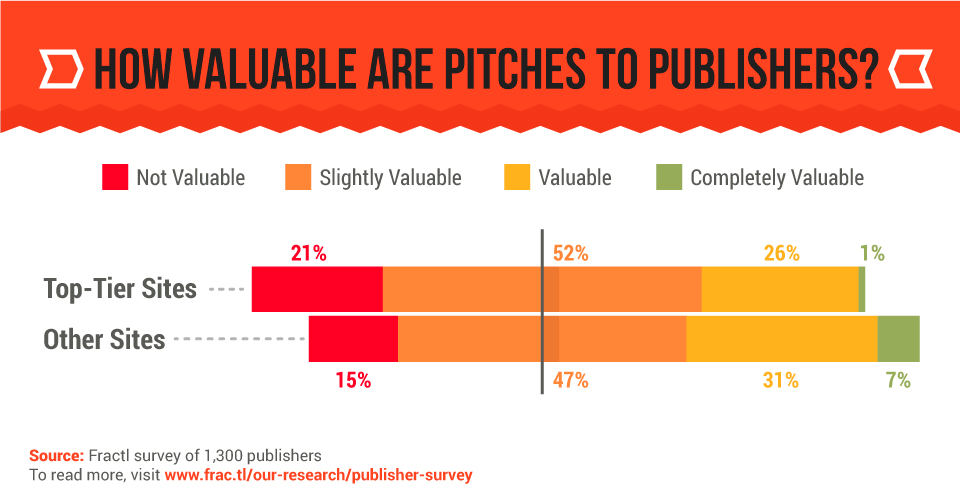 Ever wonder if journalists read your PR pitches? Or what can motivate them to open your email messages and write a story about your idea? To find answers to those questions, Fractl polled about 1,300 writers, editors and contributors.
Ever wonder if journalists read your PR pitches? Or what can motivate them to open your email messages and write a story about your idea? To find answers to those questions, Fractl polled about 1,300 writers, editors and contributors.
Some of its key findings:
- Forty-three percent of top-tier publishers receive between five and 50 pitches per week, and 57 percent receive between 50 and 500 pitches per week.
- Nearly seven out of 10 writers and editors write only one story at most per day.
- While close to half of editors and writers have a turnaround time of just one to two days, almost a quarter have queue times longer than six days.
Given the huge number of pitches and relatively small number of articles published, it’s no wonder so few pitches result in articles.
Value of Pitches to Journalists
Fractl ask how valuable pitches are to publishers. Lower-tier sites generally tend to find pitches more valuable than top-tier publishers, although most (nearly four out of five) top-tier publishers see at least some value in pitches.
Some journalists say they don’t read many or most pitches. However, 45 percent of respondents say they often or always read pitches. Only two percent admitted they never even open the emails. The rest said they rarely or sometimes read them. (Many PR professionals would dispute that data, believing that many journalists fib on survey answers about their receptivity to stories submitted by PR.) Lifestyle and food writers and editors are most likely to always read pitches. Automotive and finance writers and editors are least likely to read pitches, although differences between verticals are not huge.
What Publishers Want in PR Pitches
Writers and editors polled like to receive photos, mixed media, and videos.
They expect more demand for infographics and they think data visualizations will also see a rise in demand. Infographics already are already in high demand.
The best time of day to send pitches is early morning to noon, and the best time of the week is Monday through Wednesday.
Most agree that an email’s subject line is the most important factor for deciding if they open an email.
More than half of writers and editors across all beats prefer pitches that are between 100 and 200 words.
Journalists want pitches that are relevant to their industry. Being irrelevant to their beat is a common reason for ignoring a pitch. Being overly promotional and boring are other leading causes for rejection.
The Value of Relationships
The survey highlights the difficulty of media pitching and the significant number of PR people who commit common mistakes, says Bill Conn at Scribewise. Developing relationships is the best way to get your pitch heard. “It’s a bit of chicken and egg situation,” Conn says. “How can you build a relationship with a reporter if you can’t get them to listen to your pitches?”
Being helpful by providing insightful content helps build those relationships. “But you have to do it, truly, without expecting anything in return,” he adds. “Otherwise, your ‘helpfulness’ will have the stink of your real agenda all over it.”
Bottom Line: A new survey reveals how valuable PR pitches are to publishers and what they like to see in pitches. Depending on their viewpoint, PR pros may find the responses disheartening or encouraging. Either way, answers of journalists can help PR pros improve their media pitching practices.
William J. Comcowich founded and served as CEO of CyberAlert LLC, the predecessor of Glean.info. He is currently serving as Interim CEO and member of the Board of Directors. Glean.info provides customized media monitoring, measurement and analytics solutions across all types of traditional and social media.





